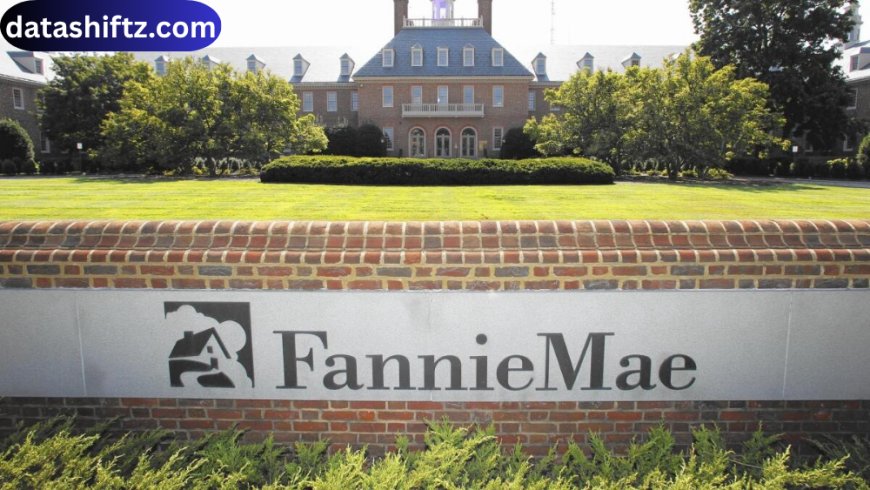Fannie Mae: Pillar of the U.S. Housing Market

Introduction
Fannie Mae, formally known as the Federal National Mortgage Association (FNMA), is a cornerstone of the U.S. housing finance system. Established in 1938 as part of President Franklin D. Roosevelt’s New Deal, Fannie Mae was created to ensure a reliable and affordable supply of mortgage funds throughout the country . Over the decades, it has played a pivotal role in transforming homeownership in America, making it more accessible and stable for millions of families.
The Genesis of Fannie Mae
Origins and Purpose
During the Great Depression, the U.S. housing market was in turmoil. Many homeowners faced foreclosure due to short-term, balloon-payment mortgages, and banks lacked the funds to offer new loans. In response, the federal government established Fannie Mae to provide liquidity to the mortgage market, enabling banks to offer more home loans
Evolution and Structure
Initially a government agency, Fannie Mae underwent significant transformations over the years. In 1968, it was converted into a privately owned corporation to remove its debt from the federal budget. This move was part of a broader restructuring of federal housing agencies, which also led to the creation of Ginnie Mae and Freddie Mac
Fannie Mae's Role in the Housing Market
Providing Liquidity
Fannie Mae doesn't directly lend money to homebuyers. Instead, it purchases mortgages from approved lenders, providing them with the capital needed to offer more loans. This process ensures a continuous flow of funds in the housing market, making homeownership more attainable for Americans.
Standardizing Mortgage Products
One of Fannie Mae's significant contributions is the standardization of mortgage products, particularly the 30-year fixed-rate mortgage. By establishing uniform lending criteria and guidelines, Fannie Mae has helped create a stable and predictable mortgage market
Risk Management
While Fannie Mae doesn't bear the full risk of mortgage defaults, it plays a crucial role in managing and mitigating these risks. Through stringent underwriting standards and ongoing monitoring, Fannie Mae ensures that the mortgages it purchases meet specific quality criteria, thereby reducing potential losses.
Financial Performance and Market Impact
Mortgage Market Share
As of recent reports, Fannie Mae and its counterpart, Freddie Mac, back over half of all U.S. mortgages. Their combined influence underscores their central role in the nation's housing finance system
Economic Influence
Fannie Mae's activities have a ripple effect on the broader economy. By facilitating homeownership, it stimulates demand in various sectors, including construction, retail, and services. Additionally, its operations influence interest rates and housing affordability, impacting both buyers and sellers in the market.
Challenges and Controversies
2008 Financial Crisis
The 2008 financial crisis highlighted vulnerabilities in the housing finance system. Fannie Mae, along with Freddie Mac, faced significant financial strain due to exposure to risky mortgage-backed securities. In response, the federal government placed both entities under conservatorship to stabilize the housing market and protect taxpayers.
Ongoing Oversight
Since the conservatorship, Fannie Mae has operated under the oversight of the Federal Housing Finance Agency (FHFA). This arrangement has led to debates about the future structure of the organization, including discussions about privatization and reform
Recent Developments
Potential Privatization
In recent years, there have been discussions about ending the conservatorship and privatizing Fannie Mae. Proponents argue that privatization could lead to increased efficiency and innovation, while opponents express concerns about potential risks to taxpayers and the stability of the housing market.
Market Outlook
Looking ahead, Fannie Mae projects a recovery in the housing market, driven by declining mortgage rates. This outlook suggests potential increases in home sales and mortgage originations, offering hope to prospective homebuyers and the broader economy
Key Milestones in Fannie Mae's History
| Year | Event |
|---|---|
| 1938 | Established as part of the New Deal to provide liquidity to the mortgage market |
| 1968 | Converted into a privately owned corporation to remove debt from the federal budget |
| 2008 | Placed under conservatorship following the financial crisis |
| 2025 | Discussions initiated regarding potential privatization and reform |
Fannie Mae's Core Functions
-
Mortgage Purchase: Buys mortgages from lenders to provide them with capital for new loans
-
Securitization: Bundles mortgages into securities for sale to investors
-
Standardization: Establishes uniform lending criteria and guidelines
-
Risk Management: Monitors and manages risks associated with mortgage defaults
-
Market Stabilization: Provides liquidity to ensure a stable housing finance system
Conclusion
Fannie Mae has been instrumental in shaping the U.S. housing market, making homeownership more accessible and stable for millions of Americans. While it has faced challenges, including the 2008 financial crisis and ongoing debates about its future structure, Fannie Mae remains a central figure in the nation's housing finance system. As the market continues to evolve, the role of Fannie Mae will undoubtedly adapt to meet the changing needs of homebuyers and the broader economy.





























